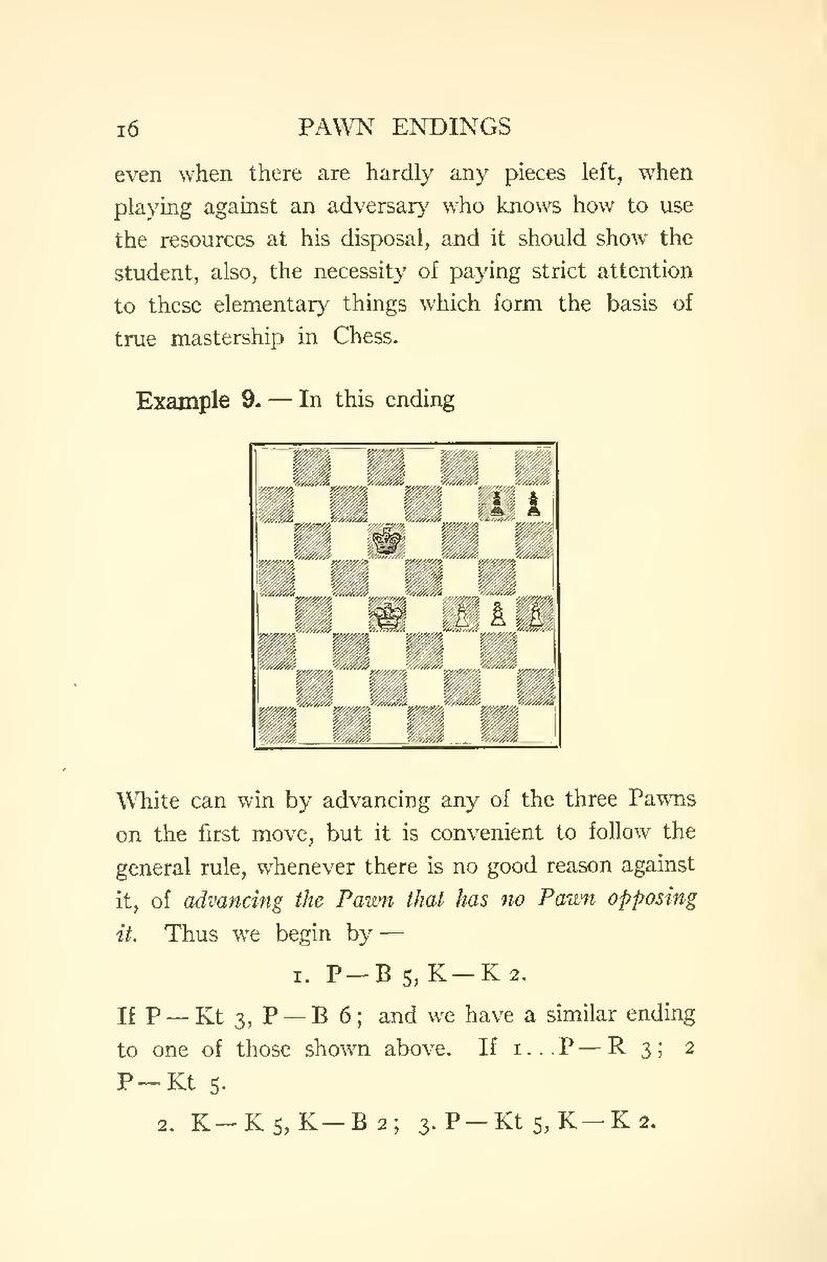16
PAWN ENDINGS
even when there are hardly any pieces left, when playing against an adversary who knows how to use the resources at his disposal, and it should show the student, also, the necessity of paying strict attention to these elementary things which form the basis of true mastership in Chess.
Example 9.—In this ending
White can win by advancing any of the three Pawns on the first move, but it is convenient to follow the general rule, whenever there is no good reason against it, of advancing the Pawn that has no Pawn opposing it. Thus we begin by—
1. P - B 5, K - K 2.
If P - Kt 3, P - B 6; and we have a similar ending to one of those shown above. If 1...P - R 3; 2 P - Kt 5.
2. K - K 5, K - B 2; 3. P - Kt 5, K - K 2.

